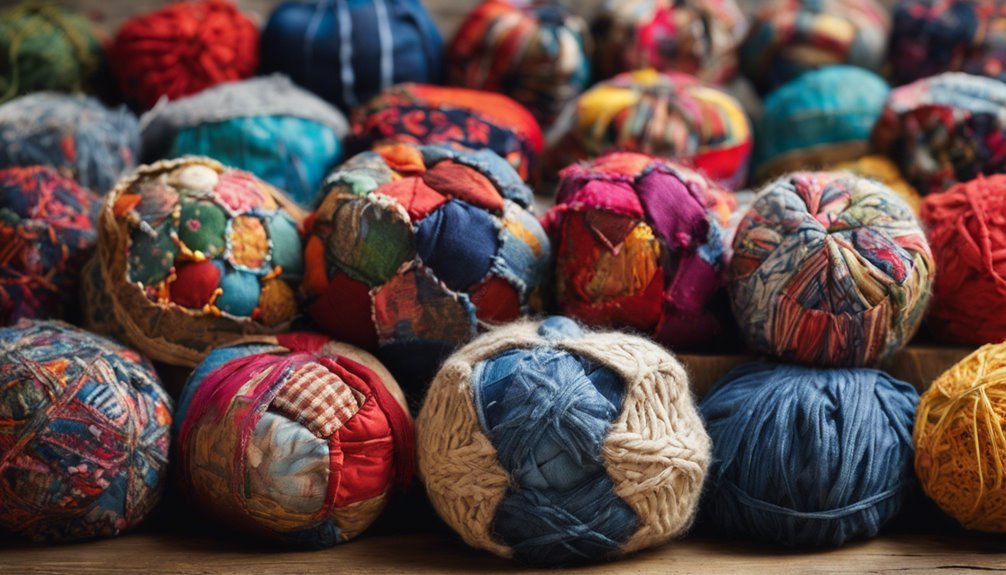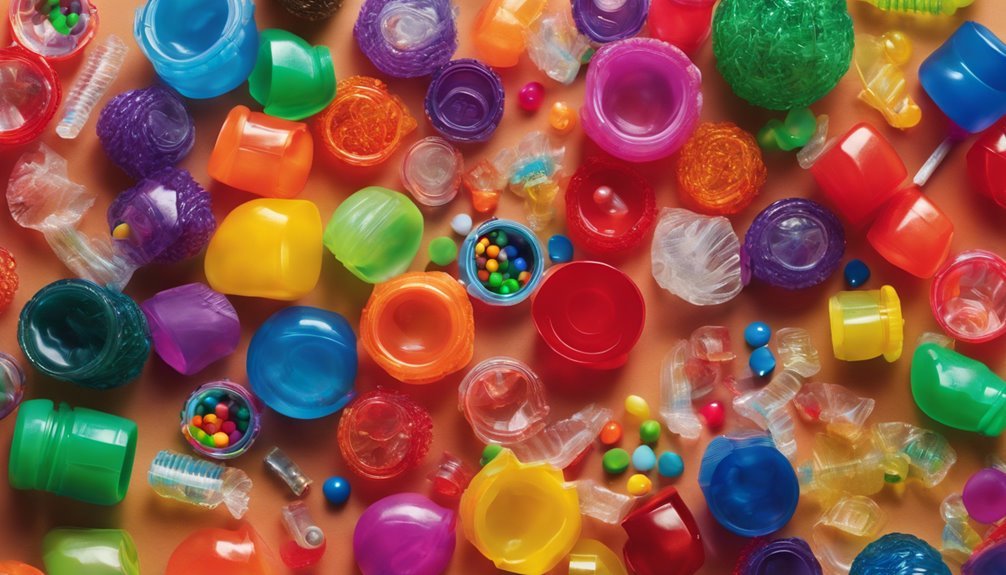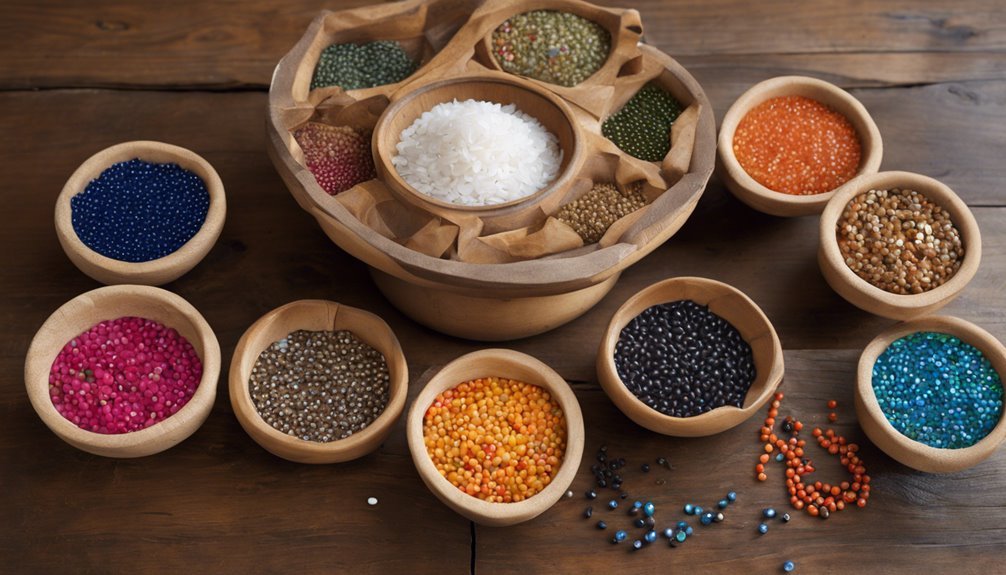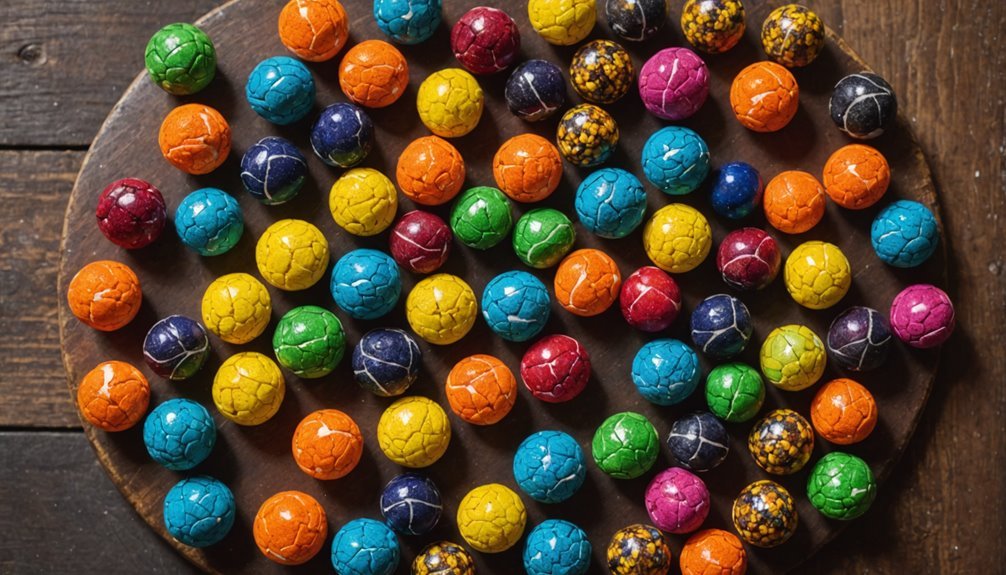When you think about creating a hacky sack, the stuffing inside is just as essential as the fabric outside. Have you ever considered the environmental impact or the potential for creativity in choosing alternative stuffing materials? Whether you’re interested in upcycling old clothing, experimenting with sound effects through reusable plastics, or supporting sustainability with organic fill options, each choice offers its own set of benefits. These alternatives not only personalize your experience but also contribute to reducing waste. Curious about how these innovative materials can change your game? Let’s explore the possibilities.
Key Takeaways
- Repurposing old tights or socks provides durable and sustainable stuffing for hacky sacks.
- Lightweight plastic bags can be cut into pieces for unique sound effects and stuffing.
- Dried beans or rice offer biodegradable and eco-friendly stuffing alternatives.
- Shredded newspaper or tissue paper is budget-friendly and reduces household waste.
- Using poly pellets from craft stores ensures consistent weight and durability.
Upcycled Fabric Options

When it comes to stuffing your hacky sack, upcycled fabric options offer a sustainable and effective solution. By repurposing old tights or socks, you not only give new life to items that might otherwise end up as waste but also guarantee your hacky sack remains durable and washable.
These materials, known for maintaining their dye stability, can handle multiple washes without losing their appeal. Worn-out t-shirts or jumpers are another fantastic choice. They provide soft, flexible stuffing that not only feels great in play but also helps reduce textile waste.
This method of using upcycled fabric isn’t just eco-friendly but also cost-effective, as you’re utilizing resources you already have.
While some may consider plastic pellets for their uniformity and weight, upcycled fabrics can offer a more environmentally conscious alternative without sacrificing functionality. Unlike plastic pellets, which contribute to plastic waste, fabrics like old T-shirts provide a similar weight and feel, making them an ideal choice.
Household Paper Materials
Exploring household paper materials, you’ll find a range of creative and eco-friendly options for stuffing your hacky sack. Tissue paper is a versatile choice, offering a lightweight feel that’s perfect for maintaining the sack’s shape. It’s essential to pack the tissue paper densely, ensuring the hacky sack remains firm and functional. This option isn’t only cost-effective but also utilizes materials you likely already have at home.
On the other hand, the newspaper provides a budget-friendly alternative. It’s readily available and allows you to repurpose old newspapers, turning potential waste into a practical solution. However, be cautious—newspaper ink can transfer onto the fabric of the hacky sack, leaving unwanted marks. To mitigate this, consider using multiple layers of newspaper or combining it with a thin lining to protect the outer fabric.
Both tissue paper and newspaper offer unique benefits and challenges, allowing you to experiment with what works best for your needs. By reusing materials you’d normally throw away, you’re not just saving money; you’re also contributing to a more sustainable lifestyle.
Reusable Plastic Choices

About reusable plastic choices for stuffing your hacky sack, you’ve got plenty of options that are both practical and sustainable. One popular choice is to reuse plastic bags. By cutting them into small, manageable pieces, you can avoid lumps and achieve a lightweight filling that keeps your hacky sack agile. The unique crackling sound from supermarket bags also adds an entertaining element to your game.
Another option is using packing materials like bubble wrap and packing peanuts. These materials effectively fill larger areas and promote sustainability by giving them a second life. Plus, their soft, cushiony texture helps maintain the shape of the hacky sack, ensuring it stays intact through countless kicks and tosses.
Poly pellets are another durable plastic option. They’re washable, won’t run dye, and are perfect for maintaining the integrity of your hacky sack’s form.
However, remember that plastic stuffing isn’t suitable for toys intended for small children or pets due to potential safety concerns.
Organic Fill Alternatives
A variety of organic fill alternatives offer eco-friendly options for stuffing your hacky sack. When you choose materials like dried beans, rice, or organic cotton, you’re opting for biodegradable solutions that outshine synthetic fillings. These natural fillers not only contribute to a greener planet but also provide different textures and weights, enhancing your hacky sack experience.
Consider using locally sourced grains such as quinoa or millet. By doing so, you support sustainable practices while enjoying unique characteristics in your hacky sack. These grains aren’t only eco-friendly but also add a distinct feel to your game, making each play session different and exciting.
Incorporating wool or fleece from ethically sourced sheep adds a soft touch, providing insulation and weight for improved performance. This choice respects animal welfare while boosting your hacky sack’s functionality.
If you’re into recycling, shredded paper from non-toxic sources or fabric scraps from upcycled clothing can serve as creative stuffing options. This reduces waste and promotes sustainability.
Additionally, using corn husks or agricultural byproducts offers a lightweight, biodegradable alternative, aligning perfectly with your eco-conscious lifestyle. Embrace these organic fill alternatives to make your hacky sacks both fun and environmentally friendly.
Craft Supply Solutions

Craft supply solutions offer creative and sustainable ways to stuff your hacky sack, turning everyday materials into functional fillers. One of the most popular choices is poly pellets. These tiny, durable beads provide consistent weight and are easy to find in craft stores, making them a go-to for many crafters. Their uniform size guarantees your hacky sack will have a balanced feel, perfect for precise footwork.
For those looking to reduce waste, upcycling options are an excellent choice. You can repurpose clean old tights, worn-out t-shirts, or even plastic bags to fill your hacky sack. Not only do these materials keep textiles out of landfills, but they also offer a unique texture and feel that can be customized to your preference.
Using knee-high pants to contain these upcycled materials is a popular technique, helping to prevent messes and maintain your hacky sack’s shape.
Experimenting with different materials allows you to achieve the ideal weight and feel. Many crafters enjoy sharing their innovative ideas and patterns online, so don’t hesitate to explore those resources for inspiration. With a little creativity, your hacky sack can be both functional and eco-friendly.
Frequently Asked Questions
What Can I Fill a Hacky Sack With?
You can fill a hacky sack with materials like poly pellets, dried beans, or rice. If you want a unique option, try aquarium gravel or cut-up plastic bags for a different feel and sound. Get creative!
What Can Be Used as Stuffing for Stuffed Animals?
You can use old tights or socks, worn-out t-shirts, or lightweight tissue paper to stuff stuffed animals. Cut plastic bags work too, but aren’t safe for kids or pets. Reclaimed stuffing from old toys is also great.
What to Use Instead of Stuffing Sewing?
You can repurpose materials for sewing projects. Use fabric scraps or shredded paper for stuffing. Old clothes or towels work well too. Consider eco-friendly options like dried beans or rice for weight and texture in your creations.
What Stuffing Can I Use for Amigurumi?
You can use polyester fiberfill for a soft, washable finish on your amigurumi. Try eco-friendly options like old t-shirts or tights for flexible stuffing. Reuse stuffing from old toys for a sustainable, cost-effective choice.
Conclusion
You’ve got plenty of eco-friendly options to stuff your hacky sack creatively. Explore your closet for upcycled fabrics like old tights or t-shirts. Grab some newspaper or tissue to keep the shape intact. Repurpose plastic bags for a unique sound effect. Opt for organic fillings, such as dried grains or ethically sourced wool, for a sustainable touch. These choices not only cut down on waste but also let you customize the weight and texture to your liking.

